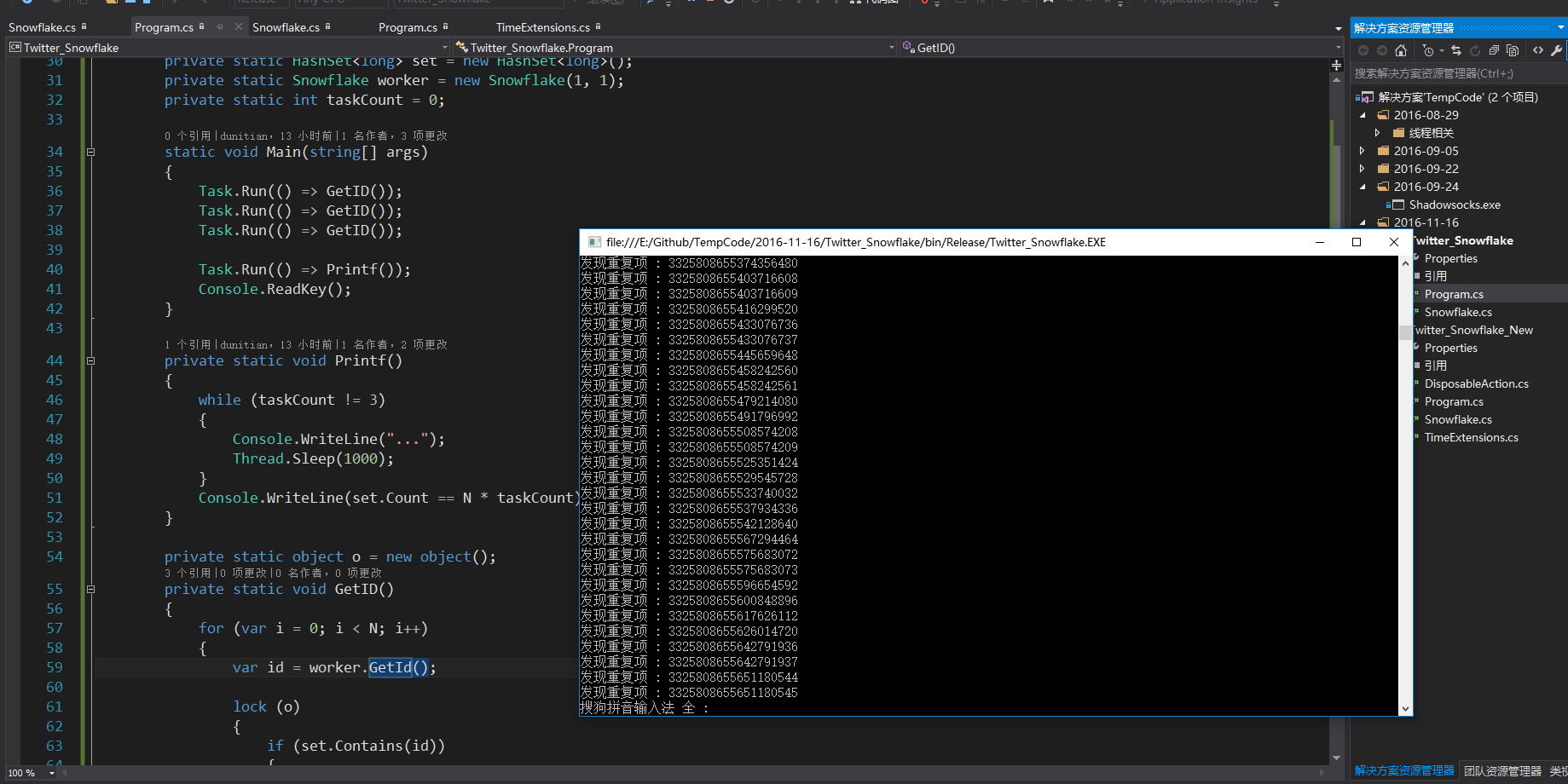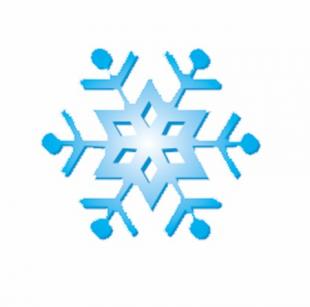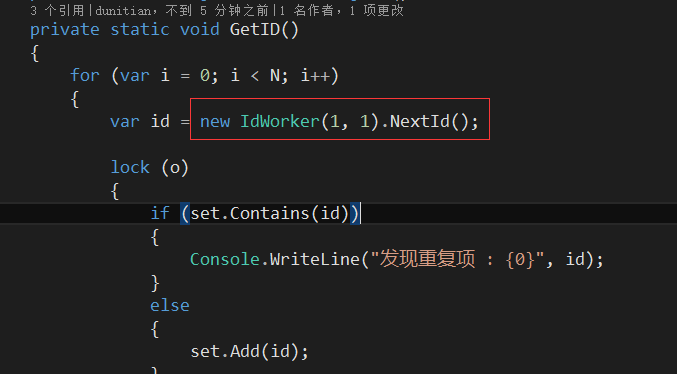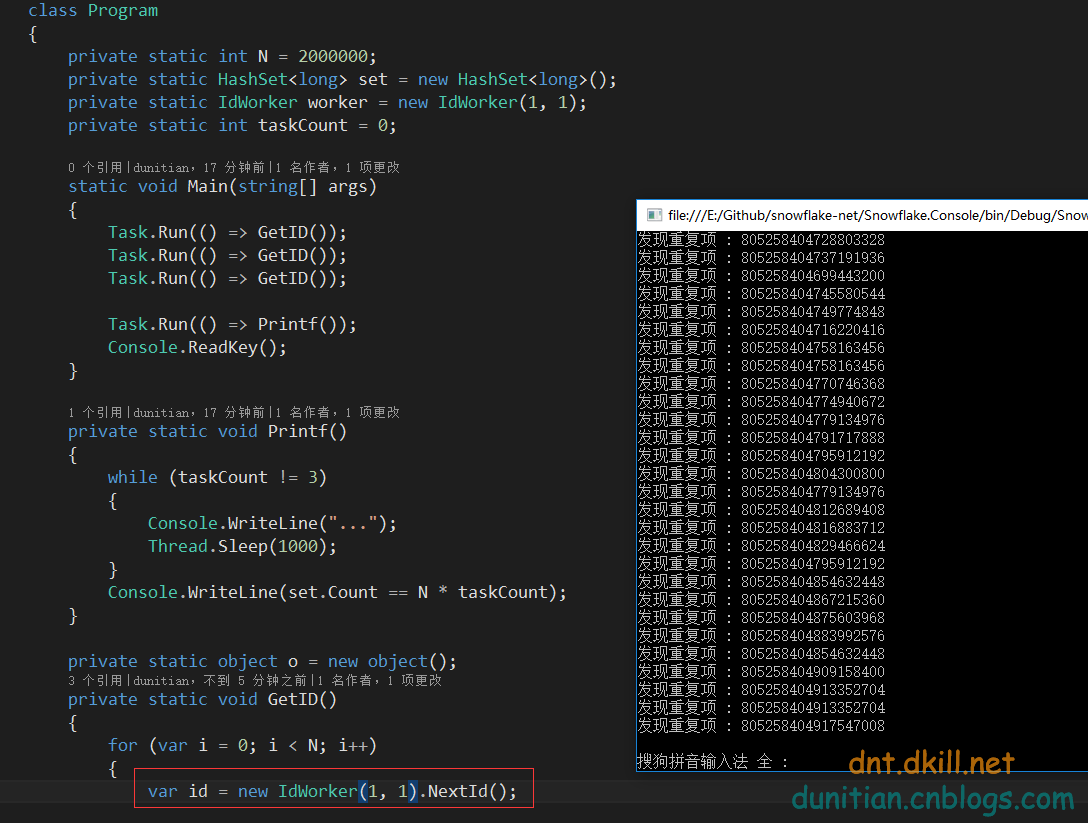关于全局ID,雪花(snowflake)算法的说明
上次简单的说一下:http://www.cnblogs.com/dunitian/p/6041745.html#uid
C#版本的国外朋友已经封装了,大家可以去看看:https://github.com/ccollie/snowflake-net
强大的网友出来个简化版本:http://blog.csdn.net/***/article/details/*** (地址我就不贴了,对前辈需要最起码的尊敬)
一开始我用的是这个简化版本,后来发现有重复项。。。(demo:https://github.com/dunitian/TempCode/tree/master/2016-11-16/Twitter_Snowflake)

全局ID的激烈讨论:https://q.cnblogs.com/q/53552/
之后在外国大牛的基础上重写修改了部分内容(https://github.com/ccollie/snowflake-net),添加了一些注解等【支持Core】。现在是可以去Nuget直接下载使用的:Snowflake.Net

源码地址:https://github.com/dunitian/snowflake-net
测试用例:

测试代码:
using System;
using System.Collections.Generic;
using System.Threading;
using System.Threading.Tasks;
using Snowflake.Net;
namespace Snowflake.ZConsole
{
class Program
{
private static int N = 2000000;
private static HashSet<long> set = new HashSet<long>();
private static IdWorker worker = new IdWorker(1, 1);
private static int taskCount = 0;
static void Main(string[] args)
{
Task.Run(() => GetID());
Task.Run(() => GetID());
Task.Run(() => GetID());
Task.Run(() => Printf());
Console.ReadKey();
}
private static void Printf()
{
while (taskCount != 3)
{
Console.WriteLine("...");
Thread.Sleep(1000);
}
Console.WriteLine(set.Count == N * taskCount);
}
private static object o = new object();
private static void GetID()
{
for (var i = 0; i < N; i++)
{
var id = worker.NextId();
lock (o)
{
if (set.Contains(id))
{
Console.WriteLine("发现重复项 : {0}", id);
}
else
{
set.Add(id);
}
}
}
Console.WriteLine($"任务{++taskCount}完成");
}
}
}
可能有些人只关心以后怎么用?==》
IdWorker worker = new IdWorker(1, 1); //大并发的情况下,减少new的次数可以有效避免重复的可能
var id = worker.NextId();
有可能上面的减少new有些同志不太懂,(⊙o⊙)…,举个例子:
测试代码不变的情况下,改这么一句:


完整调用demo:(https://github.com/dunitian/snowflake-net/tree/master/Demo)

core:(https://github.com/dunitian/snowflake-net/tree/master/Demo.Core)

IdWorker.Init().NextId()


